26 min read
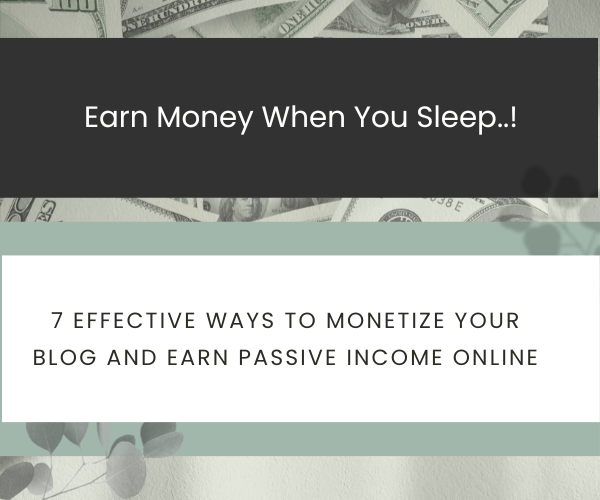
Is it practical for a blog to generate passive income? Of course! In fact, it’s practical to generate a fairly decent full-time income passively with a blog.
Imagine living a life that allows you to make money while you sleep, where you can take time off whenever you like and still receive a respectable monthly income, and where you are free to work wherever and whenever you choose.
It sounds like a dream, doesn’t it?
Believe me, a blog allows you to accomplish all of this!
With my blog, I have been able to generate an excellent passive income, and I have committed my life to assisting others in doing the same.
You can monetize your blog in many ways and earn a handsome passive income. Here, I will discuss seven effective ways to monetize your blog and earn a handsome passive income.
Let’s get started…
7 Effective Ways, at-a-glance, to Monetize Your Blog and Earn Passive Income
- Ad Networks: Utilize advertising networks like Google AdSense, Mediavine, or AdThrive to display targeted ads on your blog. These networks pay you based on clicks or impressions.
- Affiliate Marketing: Promote products or services relevant to your blog content through affiliate links. You earn a commission for every sale or action made through those links.
- Sponsored Content: Partner with brands or companies for sponsored blog posts or reviews. You can charge a fee for featuring their products or services.
- Sell Digital Products: Create and sell digital products such as e-books, online courses, printables, or templates related to your niche. Platforms like Gumroad or Teachable can assist in selling these products.
- Membership or Subscription Services: Offer premium content or exclusive resources through a membership or subscription model. Subscribers pay a recurring fee to access this content.
- Freelance Services: Showcase your expertise through your blog and offer freelance services like consulting, writing, graphic design, or coaching to your audience.
- Email Marketing: Build an email list and use it to promote products, services, or affiliate offers. Provide valuable content in your emails to engage subscribers and increase conversions.
Remember, success in monetizing your blog often requires a combination of these strategies, consistency, high-quality content, understanding your audience, and adapting to their needs and preferences.
Now I will describe these seven effective ways in detail to monetize your blog and earn passive income in 2024.
Introduction
Let’s start by defining what blog monetization really is. In addition to the pure joy of sharing knowledge and experiences, bloggers now have the chance to make money off of their platforms. In order to profit financially from the material you provide, monetizing a blog entails carefully utilizing a variety of revenue streams.
Why is it so important to monetize blogs? Beyond satisfying their own desires, monetization gives bloggers the resources they need to maintain and expand their online presence. It gives creators of content the freedom to invest more time and money in creating high-caliber work, promoting a mutually beneficial partnership between enthusiasm and pragmatism.
As we step into 2024, the avenues for generating passive income through blogging have expanded significantly. The digital realm offers an array of opportunities—each keystroke, every well-crafted piece of content, presents a prospect for income generation. This year, the potential to earn passively through blogs has reached unprecedented heights, with new strategies and trends shaping the way creators can profit from their online presence.
For both seasoned bloggers and those just embarking on their online journey, this guide serves as a compass in the dynamic world of blog monetization. Whether you’re seeking to supplement your existing income, turn your blog into a full-fledged business, or simply explore new possibilities, the following ‘7 Effective Ways to Monetize Your Blog and Earn Passive Income Online in 2024’ will equip you with actionable insights tailored to the current digital landscape.
Embark on this journey with me as I explore the intricacies of turning your blog into a sustainable source of passive income in the digital era.
Ad Networks
Ad networks, such as Google AdSense and Mediavine, represent a pivotal avenue for bloggers aiming to monetize their platforms. These networks facilitate the connection between advertisers and publishers, enabling bloggers to display targeted ads on their sites and earn passive income through various engagement models.
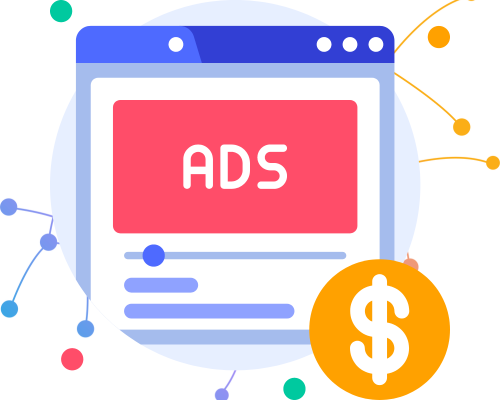
Pros and Cons of Using Ad Networks:
- Pros:
Passive Income Stream: Ad networks offer a consistent and passive income stream as you earn revenue for ad impressions or clicks.
Easy Implementation: Integrating ad networks is often straightforward, making it accessible for bloggers of all experience levels.
Diversification: Ads diversify your revenue streams, reducing dependence on a single source.
- Cons:
User Experience Concerns: Excessive ads can negatively impact the user experience, potentially leading to reduced engagement.
Limited Control: Bloggers may have limited control over the specific ads displayed, which can be a drawback in terms of relevance.
Tips for Optimizing Ad Placements and Increasing Revenue
- Strategic Placement: Experiment with ad placements to find the balance between visibility and user experience.
- Responsive Design: Ensure that your blog’s design is responsive to accommodate various devices, optimizing ad performance.
- A/B Testing: Conduct A/B testing to determine which ad formats and placements generate the highest revenue.
- Ad Refresh: Some networks offer ad refresh options, enhancing the chances of user engagement and revenue generation.
Latest Trends in Online Advertising:
The landscape of online advertising is dynamic, and staying abreast of the latest trends is paramount for bloggers seeking to optimize their earnings. As we navigate through 2024, key trends include:
- Video Advertising: Video advertising is still the top marketing medium today, with 86% of businesses leveraging it as part of their strategy.
- Personalized Advertising: Personalized advertising is becoming increasingly popular, with businesses using data to create targeted ads that are more relevant to their audience.
- Mobile-First Advertising: With more people accessing the internet through their mobile devices, mobile-first advertising is becoming more important than ever.
- Display Advertising: Display advertising is graphic or visual advertising that includes banners, images, flash, video, audio, and text on websites, video channels, apps, and social media.
- Print Advertising: Although print advertising has been around for a long time, it is still an effective way to reach a specific audience.
- Social Advertising: Social advertising is advertising that is placed on social media platforms such as Facebook, Twitter, and Instagram.
- Programmatic Advertising: Programmatic advertising is the use of software to buy digital advertising, as opposed to the traditional process that involves human negotiations and manual insertion orders.
- Increase in Search Ad, Social Media Ad, and Video Ad Spending: Despite the challenges posed by the COVID-19 pandemic, advertisers are still spending more on search ads, social media ads, and video ads.
In the pursuit to monetize your blog and earn passive income, understanding and strategically leveraging ad networks can significantly contribute to the financial success of your blogging endeavors. As we explore other effective strategies in this guide, keep in mind the power of well-implemented ad networks in creating a sustainable income stream.
Affiliate Marketing
Affiliate marketing stands as a dynamic strategy for bloggers to ‘Monetize Your Blog and Earn Passive Income.’ In essence, it involves partnering with companies or brands, promoting their products or services, and earning a commission for every sale or action generated through the affiliate links embedded in your content.
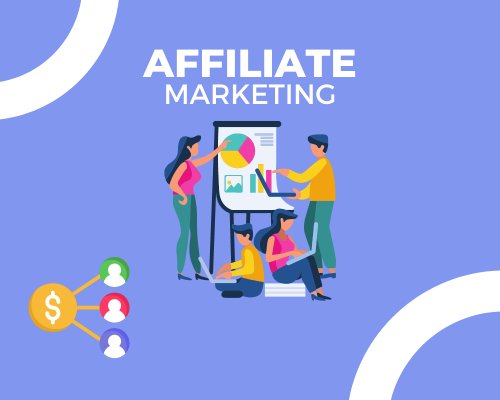
How affiliate marketing works and its relevance in the current blogging sphere:
Affiliate marketing is a symbiotic relationship between bloggers and businesses where bloggers promote products or services through unique affiliate links. When readers click on these links and make a purchase, bloggers earn a commission. This form of performance-based marketing has become a linchpin for content creators, offering a win-win scenario. As we navigate through 2024, affiliate marketing’s relevance in the blogging sphere has only intensified. It seamlessly integrates with content, providing a non-intrusive way to recommend products or services while allowing bloggers to capitalize on their audience’s trust.
How to Choose Relevant Products or Services:
- Alignment with Niche: Opt for products or services that align seamlessly with your blog’s niche and resonate with your audience.
- Quality and Reputation: Choose offerings with a solid reputation, ensuring your recommendations build trust among your readers.
- Affiliate Program Terms: Evaluate the terms of the affiliate program, considering commission rates, cookie duration, and payout methods.
Importance of Disclosing Affiliate Partnerships:
Transparency is key in affiliate marketing. Disclose your affiliate partnerships openly to build trust with your audience. Clearly communicate that you may earn a commission if they make a purchase through your affiliate links. This honesty fosters credibility and strengthens your relationship with your readers.
Tips for Effectively Integrating Affiliate Links:
- Strategic Placement: Integrate affiliate links organically within your content, avoiding a spammy or forced feel.
- Contextual Relevance: Ensure that the products or services you promote are contextually relevant to the content and provide genuine value to your audience.
- Call-to-Action (CTA): Pair affiliate links with compelling CTAs to encourage clicks and conversions.
- Utilize Visuals: Incorporate eye-catching visuals, such as banners or images, to draw attention to affiliate products.
Affiliate marketing, when executed thoughtfully, not only enables you to monetize your blog and earn passive income but also fosters a mutually beneficial relationship between you, your audience, and the affiliated businesses. As we navigate through the realms of blog monetization, the strategic integration of affiliate marketing can elevate your passive income potential.
Sponsored Content
Sponsored content involves collaborating with brands or companies to create content that promotes their products or services. The benefits of incorporating sponsored content into your blog strategy include:
- Monetization: Earn income through sponsorships, supplementing your blog’s revenue.
- Brand Exposure: Introduce your audience to relevant brands, expanding their awareness.
- Diversification: Add diversity to your content, providing fresh perspectives and insights.

How to Find and Approach Potential Sponsors:
- Understand Your Audience: Identify brands that resonate with your audience and align with your blog’s niche.
- Use Influencer Platforms: Explore influencer marketing platforms that connect bloggers with potential sponsors.
- Reach Out Professionally: Craft personalized pitches that emphasize the mutual benefits of collaboration, showcasing your blog’s reach and engagement metrics.
Guidelines for Creating Authentic Sponsored Content:
- Maintain Relevance: Ensure that sponsored content seamlessly integrates with your blog’s theme and provides value to your audience.
- Authenticity is Key: Retain your authentic voice while incorporating the brand’s message. Readers appreciate genuine recommendations.
- Tell a Story: Craft a narrative around the sponsored product or service, sharing how it fits into your life or blog journey.
- Visual Appeal: Use high-quality visuals to enhance the aesthetic appeal of the sponsored content.
Disclosure and Transparency in Sponsored Partnerships:
Transparency is non-negotiable in sponsored partnerships. Follow these guidelines:
- Clearly Disclose Relationships: Make it explicit that the content is sponsored. This can be achieved through a disclosure statement at the beginning or end of the post.
- Honest Reviews: If applicable, provide honest reviews of the sponsored product or service, even if they include constructive criticism.
- Educate Your Audience: Explain the nature of sponsored content to your audience, emphasizing that these partnerships contribute to the sustainability of your blog.
Sponsored content, when executed authentically and transparently, not only allows you to monetize your blog and earn passive income but also strengthens your relationship with your audience and the brands you collaborate with. As we navigate the landscape of blog monetization, sponsored content emerges as a strategic avenue for fostering mutually beneficial partnerships.
Sell Digital Products
In the realm of blog monetization, selling digital products has emerged as a powerful avenue for creators to not only share their expertise but also to earn substantial passive income. From insightful eBooks to comprehensive online courses and customizable templates, digital products offer bloggers diverse opportunities to monetize their skills and knowledge.
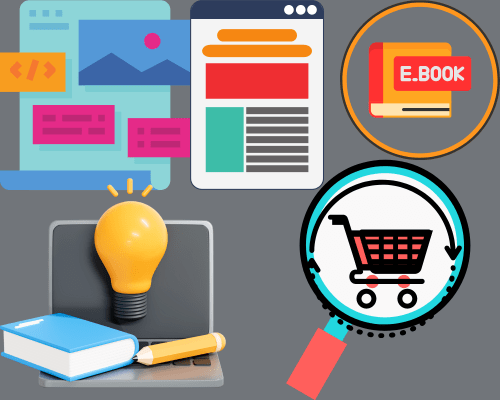
Importance of Diversifying Income Streams:
Diversification is the key to financial stability and growth in the blogging world. While ads and affiliate marketing offer valuable revenue, creating and selling digital products adds an additional layer of income. Diversifying income streams not only safeguards against fluctuations but also enhances your overall earning potential.
Types of Digital Products to Create:
- E-books: Compile your expertise into downloadable e-books that offer in-depth insights, guides, or exclusive content for your audience.
- Online Courses: Leverage your knowledge to create comprehensive online courses, providing a structured learning experience for your followers.
- Printables and Templates: Design and sell printables, planners, or templates tailored to your niche, catering to the practical needs of your audience.
- Exclusive Content: Package exclusive content, such as webinars, masterclasses, or behind-the-scenes access, into premium digital products.
Platforms for Selling Digital Products:
- Gumroad: An easy-to-use platform that allows you to sell digital products directly to your audience.
- Teachable: Ideal for hosting and selling online courses, providing a comprehensive platform for course creation and management.
- Etsy: A marketplace for handmade, vintage, and digital products, suitable for selling printables and templates.
- Podia: A versatile platform offering features for selling digital downloads, online courses, and memberships.
Marketing Strategies for Promoting Digital Products:
- Build Anticipation: Create a buzz around your upcoming digital product through teasers, sneak peeks, and countdowns.
- Leverage Your Blog and Social Media: Use your blog and social media platforms to showcase the value of your digital products. Craft engaging content that highlights the benefits and addresses your audience’s pain points.
- Offer Limited-Time Discounts: Encourage early adoption by providing limited-time discounts or exclusive offers for your loyal audience.
- Collect Testimonials: Feature testimonials from early users or beta testers to build trust and credibility.
- Collaborate with Influencers: Partner with influencers or collaborators in your niche to extend the reach of your digital products.
Selling digital products empowers you to monetize your blog and earn passive income while providing valuable resources to your audience. As we explore various avenues for blog monetization, the creation and sale of digital products stand out as a versatile and lucrative strategy, enabling you to establish a more sustainable income flow.
Membership or Subscription Services
The landscape of blog monetization has evolved, and introducing membership or subscription models provides a sustainable way to monetize your blog and earn passive income. In these models, users pay a recurring fee to access exclusive content, fostering a sense of community and loyalty.
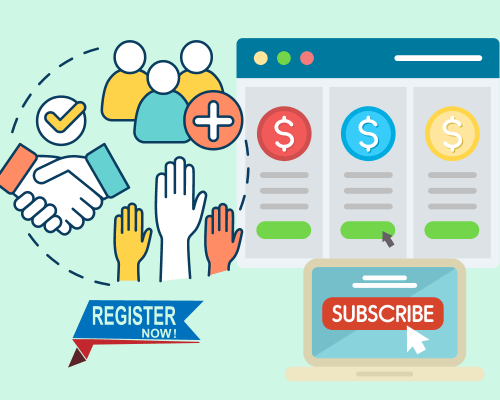
Membership Services:
- Typically, it implies a sense of belonging to a group or community.
- Membership often comes with privileges, perks, or exclusive access to certain features.
- Examples include gym memberships, club memberships, and professional organization memberships.
Subscription Services:
- Focuses more on ongoing access to a product or service.
- Customers subscribe to receive regular deliveries or access to digital content, software, or other offerings.
- Examples include streaming services (Netflix, Spotify), software subscriptions (Adobe Creative Cloud), and subscription boxes (meal kits, beauty products).
How to Create Exclusive Content for Subscribers:
- In-Depth Guides and Tutorials: Offer detailed guides or tutorials that go beyond what’s available to the general audience.
- Live Q&A Sessions: Conduct live Q&A sessions, providing subscribers with direct access to you and fostering a more personal connection.
- Early Access to Content: Provide subscribers with a sneak peek or early access to your blog posts, videos, or any other content you produce.
- Exclusive Webinars or Workshops: Host exclusive webinars or workshops on topics relevant to your niche, creating a valuable learning experience for subscribers.
Platforms for Setting Up Membership Services:
- Patreon: A popular platform for creators, allowing you to offer different membership tiers with varying benefits.
- Memberful: An easy-to-use membership platform that integrates seamlessly with existing websites, offering customization options for subscription plans.
- Substack: Ideal for writers, Substack enables you to offer paid subscriptions for premium content, including newsletters and articles.
Tips for Retaining and Growing Your Subscriber Base:
- Consistent Value Delivery: Regularly provide high-quality, exclusive content to keep subscribers engaged and satisfied.
- Community Engagement: Foster a sense of community among your subscribers through forums, discussions, or exclusive social media groups.
- Feedback Mechanism: Encourage feedback and suggestions from subscribers to tailor your content to their preferences.
- Promotional Periods: Occasionally offer promotions or limited-time discounts to attract new subscribers and retain existing ones.
- Communication: Keep an open line of communication with your subscribers through newsletters or updates, ensuring they feel connected to your blog.
Membership or subscription services not only allow you to ‘Monetize Your Blog and Earn Passive Income’ but also cultivate a dedicated community around your content. By providing exclusive value and building a closer relationship with your audience, you create a sustainable income stream that can withstand changes in the digital landscape.
Freelance Services
Your blog serves as an invaluable platform to not only share content but also showcase your expertise. Leverage your blog to highlight your skills, knowledge, and unique insights within your niche. Establish yourself as an authority in your field through well-researched and insightful blog posts, demonstrating your expertise to potential clients.

Types of Freelance Services to Offer:
- Content Writing: Offer your writing services to businesses, websites, or other bloggers looking for high-quality content.
- Consulting: Provide consulting services based on your expertise, offering guidance and strategies to individuals or businesses.
- Graphic Design: If you have design skills, offer freelance graphic design services for website graphics, social media visuals, or branding materials.
- Social Media Management: Leverage your knowledge of building an online presence to offer social media management services to businesses seeking to enhance their digital footprint.
Setting Up a Portfolio or Services Page on Your Blog:
- Portfolio Showcase: Create a dedicated section on your blog to showcase your previous work, highlighting the diversity and quality of your freelance services.
- Service Offerings: Clearly outline the freelance services you provide, along with detailed descriptions, pricing (if applicable), and any packages you offer.
- Testimonials: If you have satisfied clients, include testimonials on your portfolio or services page to build credibility and trust.
- Contact Information: Make it easy for potential clients to get in touch with you by providing clear contact information or a contact form.
Building Credibility and Attracting Clients:
- Consistent Branding: Ensure a consistent brand image across your blog, portfolio, and social media platforms to build a professional and recognizable identity.
- Guest Posts and Collaborations: Contribute guest posts to reputable websites in your niche to expand your reach and attract potential clients.
- Certifications or Awards: Showcase any relevant certifications, awards, or recognitions you’ve received to build credibility.
- Networking: Actively engage in networking within your niche, both online and offline, to connect with potential clients and collaborators.
By strategically offering freelance services based on your blog’s niche, you not only monetize your blog and earn passive income but also leverage your expertise to build a thriving freelance business. As you establish credibility and attract clients through your blog, the potential for sustainable income and professional growth becomes a tangible reality.
Email Marketing
Email marketing is a digital marketing strategy that involves sending emails to a group of people with the goal of promoting products or services, building relationships, or delivering valuable content. It is a powerful tool for businesses and organizations to connect with their audience, nurture leads, and drive conversions.
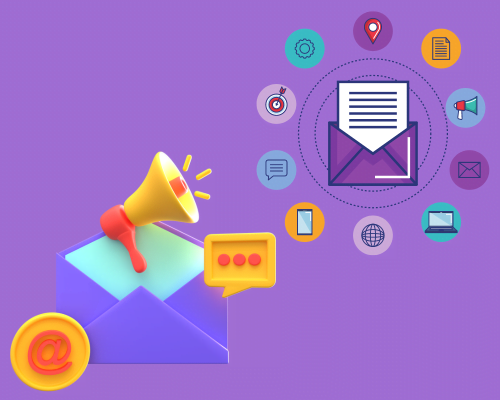
Importance of Building and Nurturing an Email List:
- Direct Communication Channel: Email provides a direct and personal channel of communication with your audience.
- Ownership and Control: Unlike social media platforms, you own and control your email list, safeguarding against external changes.
- Targeted Engagement: An email list allows you to target specific segments of your audience with personalized content, fostering stronger connections.
Strategies for Effective Email Marketing:
- Segmentation: Divide your email list into segments based on interests, behaviors, or demographics for more targeted and relevant content.
- Automation: Implement automated email sequences, such as welcome series, nurture campaigns, or product onboarding, to streamline communication.
- Compelling Content: Craft engaging and valuable content in your emails, including exclusive insights, updates, and offers.
- Responsive Design: Ensure your emails are mobile-friendly to accommodate users accessing content on various devices.
Using Emails to Promote Products, Services, or Affiliate Offers:
- Strategic Product Promotion: Integrate product promotions seamlessly into your email content, emphasizing the value they bring to your audience.
- Limited-Time Offers: Create a sense of urgency through limited-time offers or exclusive discounts available only to your email subscribers.
- Affiliate Marketing Emails: Promote affiliate products or services within your email campaigns, providing genuine recommendations to your subscribers.
Tools and Techniques for Email List Growth:
- Lead Magnets: Create compelling lead magnets, such as e-books, templates, or exclusive content, to entice users to subscribe.
- Opt-in Forms: Strategically place opt-in forms on your blog, offering users the opportunity to subscribe at key touchpoints.
- Contests and Giveaways: Run contests or giveaways with entry requirements that include subscribing to your email list.
- Referral Programs: Encourage existing subscribers to refer others by implementing a referral program with incentives.
- Social Media Integration: Leverage your social media platforms to promote your email list, driving traffic from various channels.
As you harness the power of email marketing, not only do you’monetize your blog and earn passive income,’ but you also cultivate a loyal community of engaged followers. By consistently delivering value through your emails, you strengthen your relationship with subscribers, making email marketing an indispensable tool in your blog monetization strategy in 2024.
Final Thoughts
The key to sustained success in blog monetization lies in diversity. A diversified approach not only hedges against uncertainties but also maximizes your blog’s earning potential. By incorporating a mix of ad revenue, affiliate marketing, digital product sales, and other strategies, you create a resilient income stream that adapts to the dynamic landscape of online entrepreneurship.
Remember, don’t put all your eggs in one basket. A diverse monetization portfolio ensures stability and longevity in your blogging journey.
As you embark on this journey, remember that success lies in adaptability, consistency, and the willingness to explore new horizons in the ever-evolving world of online content creation. Here’s to the growth and prosperity of your blogging endeavors in 2024 and beyond!
The digital landscape of 2024 offers unprecedented opportunities for bloggers to turn their passion into profit. By strategically embracing a variety of monetization strategies, you not only enhance your blog’s financial viability but also create a sustainable source of passive income.
Now that you have the roadmap, take the first step today. Implement one strategy at a time, measure results, and refine your approach. Your journey to monetize your blog and earn passive income begins now!
Additional Resources
Blog monetization involves various strategies, and staying updated with the latest trends and techniques can be beneficial. Here are some additional resources to help you explore and implement effective blog monetization strategies:
- How to earn passive income from a blog: a step-by-step guide [2024] by Productive Blogging
- How to Monetize a Blog in 2024 (7 Income Producing Strategies) by Online Business Ambitions
Explore More
Explore the following articles to expand your knowledge and enhance your website’s performance:
- How to Start a Blog from Scratch and Make It Successful to Make Money in 2023: Step-by-Step Guide – Learn the essentials of launching a successful blog from scratch and turning it into a profitable venture in 2023.
- How to Boost Your Website’s SEO in 2023 with Keyword Research PHP Script: A Comprehensive Guide – Discover advanced strategies for improving your website’s SEO with keyword research and PHP scripting in 2023.
- How to Install and Activate Astra Theme in 2023 on WordPress: Step-by-Step Guide – Follow a step-by-step guide to set up the Astra theme on your WordPress site in 2023, optimizing its design and functionality.
- How to Install and Set Up Elementor Pro Plugin in 2023 on Your WordPress Site: A Comprehensive, Step-by-Step Guide – Learn how to install and configure the Elementor Pro plugin for a dynamic, feature-rich WordPress site in 2023.
- How to Find the Best Keywords for Content Writing in 2023: A Comprehensive Guide – Master the art of keyword research to create content that ranks high and attracts the right audience in 2023.
- How to Start Affiliate Marketing Without an Audience in 2023: An Exclusive Guide – Explore exclusive insights on how to kickstart your affiliate marketing journey in 2023, even if you don’t have a pre-existing audience.
- How to Use Content Marketing Packages to Grow Your Business in 2023: A Comprehensive Guide – Learn how to leverage content marketing packages to boost your business’s growth and online presence in 2023.
- How to Choose the Best Niche for Blogging with Low Competition in 2023: An Exclusive Guide – Gain an exclusive guide to selecting a niche for your blog that offers low competition and high potential for success in 2023.
- How to Register a Domain Name in 2023: A Comprehensive Guide – Follow a comprehensive guide on domain name registration, an essential step in establishing your online presence in 2023.
- Ezoic WordPress Plugin Installation and Optimization in 2023: A Comprehensive Guide – Learn how to install and optimize the Ezoic WordPress plugin for optimizing ad revenue, website speed, and user experience.
- 10 Actionable SEO Tips to Boost Your Website’s Visibility and Traffic in 2023– Learn how to boost your website’s visibility and traffic.
Dive into these articles to further enhance your website’s performance, expand your online presence, and stay up-to-date with the latest strategies and trends.
Our Recommendations
In your blogging journey, choosing the right tools and themes can make a significant difference. Here are our top recommendations to start your blog and earn passive income online in 2024:
Astra Pro Theme
- Why We Recommend Astra Pro: Astra Pro is a lightweight and highly customizable WordPress theme that loads quickly, ensuring a great user experience and improved SEO performance.
- Features: It offers a range of pre-built website templates, seamless integration with popular page builders like Elementor, and extensive customization options. Get Astra Pro
OceanWP Premium Theme
- Why We Recommend OceanWP Premium: OceanWP Premium is a versatile and user-friendly theme known for its speed and compatibility with essential SEO plugins.
- Features: It provides an array of premium extensions for added functionality, WooCommerce integration, and mobile responsiveness. Get OceanWP Premium
Elementor Pro Theme Builder
- Why We Recommend Elementor Pro: Elementor Pro takes website design to the next level with its intuitive drag-and-drop builder, helping you create visually stunning, SEO-friendly pages.
- Features: It offers a wide range of widgets, templates, and theme builder capabilities to craft a unique and SEO-optimized site. Get Elementor Pro
These recommendations are based on their proven track record of enhancing website performance and SEO results. By using these tools, you can elevate your website’s design, speed, and functionality, ultimately boosting your website’s visibility and traffic in 2024.
FAQs
Q1: What is the significance of monetizing a blog?
Monetizing a blog allows content creators to turn their passion into profit. It involves implementing various strategies to generate income from the blog’s audience and content.
Q2: Why is earning passive income important for bloggers in 2024?
Earning passive income provides financial stability and freedom for bloggers. In 2024, it remains a crucial aspect of sustaining a successful blogging career amidst evolving digital landscapes.
Q3: How long does it take to see results from blog monetization?
The timeline varies, but it’s essential to be patient. Some strategies, like ad networks, may yield quicker results, while others, such as building a loyal subscriber base, may take time. Consistency is key.
Q4: Do I need a large audience to monetize my blog effectively?
While a larger audience can enhance your monetization potential, it’s not the sole determinant of success. Some strategies, like affiliate marketing or selling digital products, can be effective with a smaller but more engaged audience.
Q5: How can I choose the right affiliate products for my blog?
You can choose products relevant to your blog’s niche and align them with your audience’s interests. Consider the product’s reputation, quality, and the terms of the affiliate program before promoting it.
Q6: Is it possible to monetize a blog without using ads?
Absolutely. Ad networks are just one of many monetization avenues. Strategies like affiliate marketing, selling digital products, and offering services provide alternative ways to generate income without relying on ads.
Q7: Can I use multiple monetization strategies simultaneously?
Absolutely. In fact, a diversified approach combining strategies like ads, affiliate marketing, and digital product sales often yields the best results. Just ensure they complement each other and align with your audience’s preferences.
Q8: How can I measure the success of my blog monetization efforts?
Key performance indicators (KPIs) include revenue generated, audience engagement, conversion rates, and growth in subscribers. Regularly analyze these metrics to evaluate the effectiveness of your monetization strategies.
Q9: Are there legal considerations when monetizing my blog?
Yes, it’s important to disclose affiliate relationships, adhere to copyright laws, and comply with the terms of ad networks. Additionally, consult with legal professionals to ensure compliance with regulations.
Q10: Is passive income truly achievable through blogging?
Yes, but it requires effort upfront. Setting up passive income streams like affiliate marketing, digital products, or membership services allows you to earn income over time with less active involvement.

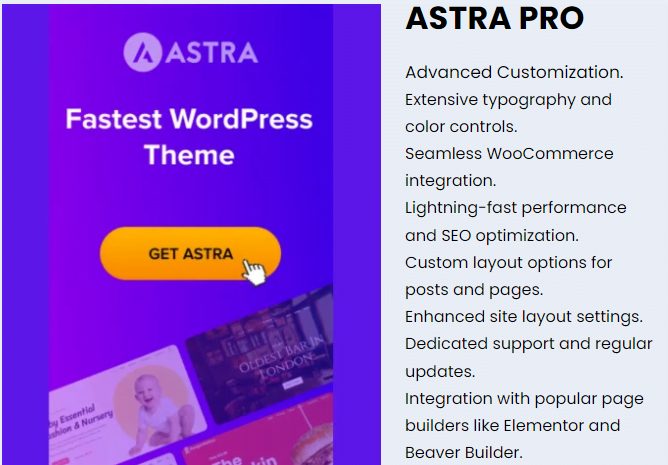
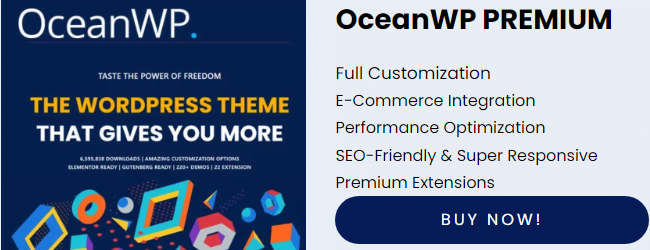
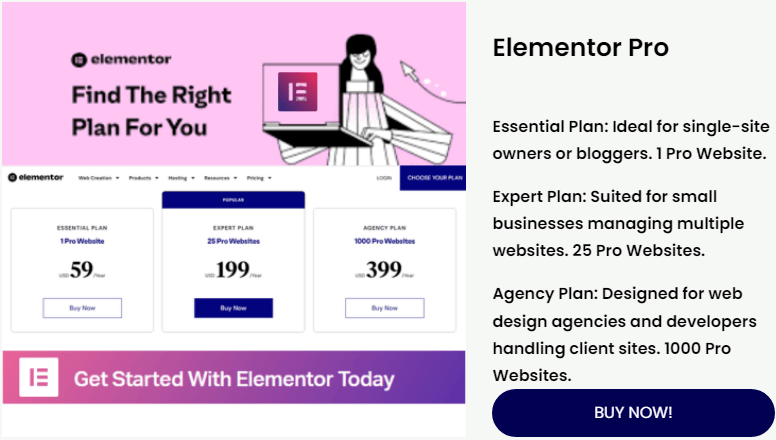



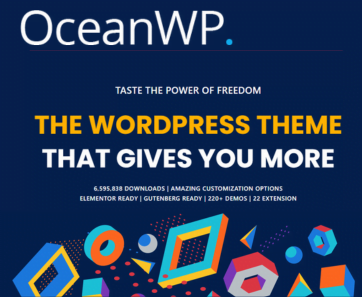


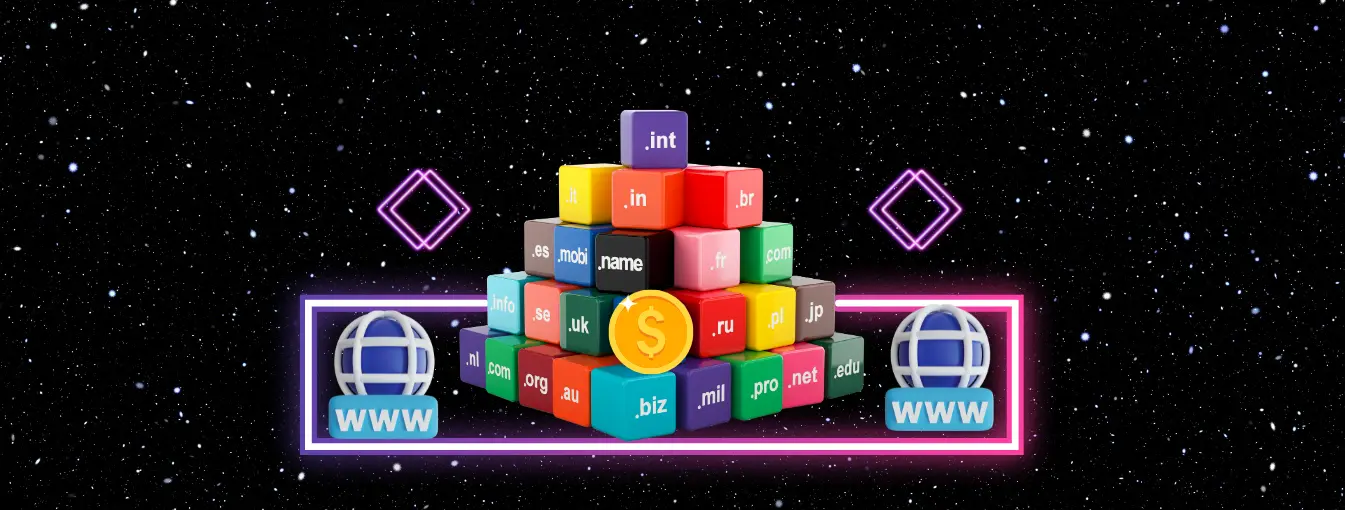

4 thoughts on “7 Effective Ways to Monetize Your Blog and Earn Passive Income in 2024”
Pingback: 8 Best AI Tools For Bloggers To Write Content In 2024: AI Empowerment! - GUIDE ARENA
Pingback: The Content Marketing World 2024: 7 Hottest Trends You Need To Know - GUIDE ARENA
Pingback: An Exclusive QuillBot Review (2024): Elevate Your Writing Game Today!✍️ - GUIDE ARENA
Pingback: Beyond Sharing: Effective Blog Promotion Tactics That Work (2025) - GUIDE ARENA